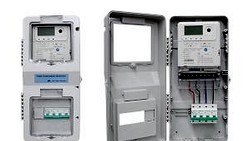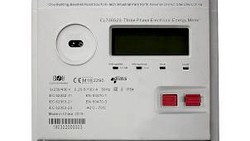With the global shift towards renewable energy sources, solar photovoltaic (PV) installations are increasingly commonplace. The compensation mechanisms for the electricity produced by these systems, however, differ based on the incentive frameworks adopted. Zero feed-in and net-metering represent two prevalent models of compensation.
Zero Feed-in
The term "zero feed-in" denotes a specific policy or configuration within the energy industry, whereby electricity produced by renewable sources—for instance, solar panels—is not redirected into the electrical grid. The generated power is utilised directly on the premises or conserved within battery systems for subsequent usage. The primary objective of this strategy is to enhance the self-utilisation of renewable power while reducing dependence on the electrical grid infrastructure.
Such zero feed-in policies are frequently adopted in locales where the existing grid framework may not have the capacity to manage surplus generation from renewable sources, or in situations where the financial aspects of feed-in tariffs do not present a feasible option.
Advantages of Zero Feed-in
- Mitigates Grid Congestion
One of the primary advantages of a zero feed-in policy is its ability to reduce grid congestion. By limiting the amount of surplus electricity that can be fed back into the grid, these policies encourage homeowners and businesses to closely match their production with their consumption. This can lead to a more balanced and stable grid where the flow of electricity is more predictable and manageable. In turn, this can reduce the need for costly upgrades to the grid infrastructure aimed at handling peaks in electricity flow, which are often a result of excess generation from decentralized sources. - Diminishes Electricity Tariffs
From an economic standpoint, zero feed-in policies can contribute to a reduction in electricity tariffs. When the grid is not receiving excess energy from solar PV systems, there is less need for utilities to manage and redistribute this surplus power. This can translate to lower operational costs for the utilities, which can potentially be passed on to consumers in the form of reduced electricity prices. Additionally, as the grid becomes more stable and less prone to congestion-related issues, the associated costs of maintaining and upgrading grid infrastructure may be lessened, further contributing to lower tariffs. - Encourages Energy Conservation
Zero feed-in policies inherently promote energy conservation by not providing financial incentives for generating more electricity than is consumed on-site. This can motivate homeowners to adopt a more energy-conscious lifestyle, focusing on reducing their electricity usage to match their production capabilities. Without the option to sell excess electricity back to the grid, homeowners may invest in energy-efficient appliances, retrofit their homes to be more energy-efficient, or adjust their habits to use electricity more judiciously. This shift in consumer behavior can have a broader impact on the overall demand for electricity, leading to a more sustainable energy consumption model.
Drawbacks of Zero Feed-in
- Deters Solar PV Uptake
One notable drawback of zero feed-in policies is that they can act as a disincentive for the adoption of solar photovoltaic (PV) systems. The economic attractiveness of installing a solar PV system is often partly based on the ability to sell excess electricity back to the grid. Without this financial incentive, the return on investment for solar panels can appear less favourable, leading potential buyers to reconsider their decision. This can slow down the rate of new solar installations, which is counterproductive to increasing the share of renewable energy in the overall energy mix. - Restricts Renewable Energy Expansion
The expansion of renewable energy sources is crucial for the transition towards a more sustainable energy system. However, zero feed-in policies might hinder this growth by removing the incentives for producing more renewable energy than is immediately needed on-site. This could limit the overall contribution of renewable sources to the energy mix, as individuals and businesses may not see the benefit in installing larger systems that produce more energy than they can consume or store, even if they have the capacity to do so. - Disadvantages Early Adopters
For those who installed solar PV systems with the expectation of being able to sell their surplus energy back to the grid, the introduction of a zero feed-in policy can feel particularly unfair. These early adopters may have calculated their expected savings and payback periods based on a certain rate of compensation for their excess electricity. With the policy change, they might face an extended payback period, potentially turning what was once a financially sound investment into a less attractive one. This can create a sense of injustice among early adopters and may undermine public trust in future energy policies.

Net-Metering
Net-metering is an energy billing mechanism that allows consumers who generate their own electricity using solar panels or other renewable sources to feed the energy they do not use back into the grid. Essentially, it's a system that credits solar energy system owners for the electricity they add to the grid. Here's how it typically works: when a renewable energy installation generates more electricity than needed, the surplus is sent to the power grid, and the producer receives a credit against their electricity consumption during times when their generation doesn't meet their energy demand.
The beauty of net-metering lies in its simplicity and its ability to make renewable energy more accessible and cost-effective for the average consumer. It encourages the adoption of renewable energy by providing tangible financial benefits and contributes to a more sustainable energy eco-system by reducing reliance on fossil fuels.
Now, if you're considering capitalising on a net-metering arrangement, it's crucial to have the right equipment to accurately measure the electricity you consume and produce. This is where our CLOU bi-directional energy meters come into play. These state-of-the-art meters are designed to individually record both the export to and the import from the electricity grid. They are an ideal solution for anyone looking to make the most of net-metering policies.
Advantages of Net-Metering
- Stimulates Solar PV Uptake
Net-metering provides a compelling financial incentive for individual and commercial consumers to invest in solar photovoltaic (PV) systems. By offering the ability to earn credits for surplus energy produced, net-metering enhances the economic attractiveness of solar PV installations. This financial motivation is a significant driver in the decision to adopt solar technology, as it can shorten the payback period and increase the overall return on investment. - Boosts Renewable Energy Expansion
The proliferation of net-metering policies can significantly impact the broader expansion of renewable energy sources. By creating a market for surplus electricity, these policies enable more households and businesses to become energy producers, not just consumers. This shift contributes to a more diversified and resilient energy grid, reducing the strain on traditional energy sources and promoting the use of clean, renewable energy. - Benefits Homeowners
For homeowners with solar PV systems, net-metering can lead to substantial savings on electricity bills. Since the energy produced by their own systems can offset the energy they consume from the grid, homeowners can see a significant decrease in their monthly energy costs. Additionally, in times where their system produces more energy than they use, the credits earned can be used to reduce future bills. This benefit helps to improve the financial return on the investment made in solar technology and can make solar PV systems more accessible to a wider range of consumers.
Drawbacks of Net-Metering
While net-metering has been pivotal in promoting solar PV installations, it's not without its challenges. It's important to discuss some of the potential drawbacks that are associated with net-metering systems:
- May Escalate Electricity Tariffs
The integration of net-metering policies could inadvertently lead to an increase in electricity tariffs. The cost of maintaining the energy grid and the subsidies provided to solar PV system owners typically come from the pool of all electricity consumers. As a result, those costs might be distributed across all customers, including those without solar installations. This can lead to higher electricity bills for non-solar customers, who are effectively helping to subsidize the solar energy produced by others. - Potential for Grid Instability
A high penetration of solar PV systems in a concentrated area can present challenges for maintaining grid stability. The intermittent nature of solar power—where output can fluctuate due to factors like weather conditions—means that there can be a mismatch between energy production and energy consumption. This can lead to technical challenges for grid operators who must balance supply and demand in real-time, ensuring that the grid remains stable and reliable. - Perceived Unfairness to Non-Solar Customers
Net-metering policies are sometimes seen as creating a disparity between solar and non-solar customers. Solar PV owners receive financial benefits for the excess energy they generate, which can be perceived as an unfair advantage, especially if non-solar customers are indirectly supporting these incentives through their electricity bills. Critics argue that this could create a divide between those who can afford to invest in solar technology and those who cannot, potentially exacerbating social and economic inequalities.
Comparing Zero Feed-in with Net-Metering
| Aspect | Zero Feed-in | Net-Metering |
|---|---|---|
| Remuneration for surplus electricity | Absent | At retail rate |
| Grid impact | Reduces congestion | May cause instability |
| Influence on electricity tariffs | Potential reduction | Potential increase |
| Solar PV promotion | Discourages | Encourages |
| Renewable energy development | May limit | Supports |
| Homeowner support | Not provided | Lowers electricity bills |
| Equitability | Could disadvantage early adopters | May favour solar PV owners |
Takeaway
Opting between zero feed-in and net-metering policies requires a nuanced approach that takes into account the various facets of the solar PV market, the maturity of grid infrastructure, and the specific energy policy goals of a region. Zero feed-in models can help alleviate grid congestion and contribute to keeping electricity tariffs in check, while net-metering models offer incentives that can accelerate the uptake of solar PV and promote the growth of renewable energy.
The key objective is to create a compensation framework that balances grid stability, cost efficiency, and the encouragement of renewable energy sources. Understanding the differences between zero feed-in and net-metering is fundamental for policymakers and industry stakeholders to make informed choices that support the transition to a more sustainable energy landscape.
If you have any inquiries or need further information about our product range of energy storage or bi-directional meters and how they can be integrated into your energy management strategy under various metering policies, please do not hesitate to reach out to us. We are here to assist you and welcome your valuable thoughts and comments.
Thank you for reading. Until then, keep shining bright like a solar panel on a sunny day!





All comments are moderated before being published. Inappropriate or off-topic comments may not be approved.